
Vol. XVIII, No. 10, December 2018
- Editor's corner
- Is virtual reality the next BIG THING?
- Ocean5 wins Best New Center - Lounge/Restaurant design award
- Google is updating Maps as a B2C app
- Recent articles and in the press
- Construction cost increases challenging feasibility
- Most loved non-alcoholic drinks & their fastest growing flavors
- Home-basing - the new competition
- Miniature golf design for tomorrow
- A new generation of moms in on the way
- Willingness to spend time and money in a restaurant based on the noise level
- Update on the Tchotchke Index - what does it really tell us?
- eSports growing in popularity and coming to Walmart
- Trends reshaping dining out
Is virtual reality the next BIG THING?
If you attended the recent IAAPA convention in Orlando, you would think that virtual reality is the next BIG THING. The show directory listed 81 virtual reality exhibitors. There were a lot of VR options shown, everything from arcade type games to multi-player games (tethered and free-roam) and VR combined with motion simulation.
There is no question that there is a lot of excitement about VR. But is it the next big thing for community leisure venues (CLVs), including family entertainment centers (FECs)? We believe that a 'big thing' requires something to be an attraction with a long life, something that will last a number of years and maintain repeat appeal and that will give a good return on investment. We're not so sure we're there yet with these early generation, out-of-home VR options, especially for CLVs. They are more likely just novelties that will get a lot of hype and draw a lot of initial attention. Many consumers may be willing to give them a try, but will they have repeat appeal?
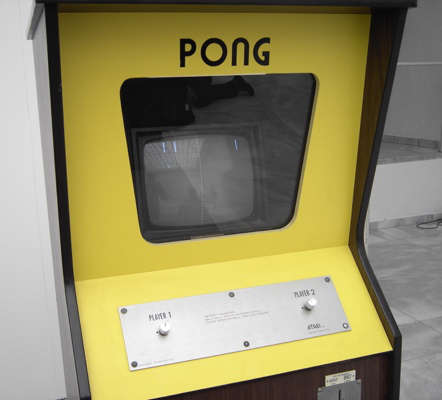
And there is the serious threat of technological advancements that happen very quickly today making existing VR options obsolete. New systems will come out that have more comfortable masks, have better graphics/resolution, better games, better latency, better haptics and offer an overall better, higher quality experience and probably cost less, meaning a lower charge to the guest.
But perhaps the biggest threat to VR being the next big thing for CLVs is at-home VR options on the horizon. VR may have the same history as Pong.
Pong was released in 1972 and became the first commercially successful video game, launching the arcade video game industry. At the height of its success, there were approximately 35,000 Pong arcade machines across the U.S, each averaging $200 per week (that's $1,200 in 2017 dollars). However, in 1974 Pong soon became available for home console video play. Eventually, a mass exodus to at-home video game led to the decline of video game arcades.
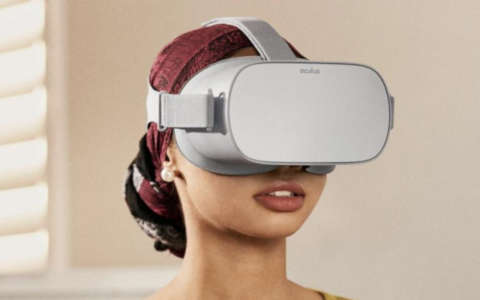
Oculus Quest standalone VR headset
The same phenomenon is probably going to happen with VR even before location-based VR reaches maturity. Oculus VR, a division of Facebook, has announced the release of a new home VR system in the spring of 2019, the Oculus Quest VR headset for $399. It uses motion controllers with four wide-angle cameras that provide positional tracking and lets people walk thru virtual space. There are built-in speakers that pipe sound into users' ears. It includes touch controllers that recreate your hands, their gestures and interactions in the VR world you are immersed in. Most important, it is an untethered, stand-alone headset, not even requiring a back pack, and allows roaming in arena-scale spaces up to 4,000 square feet. There is no complicated set up of any base-stations and doesn't require an expensive PC. Everything is contained in the headset. And it allows multiplay with a number of simultaneous players.
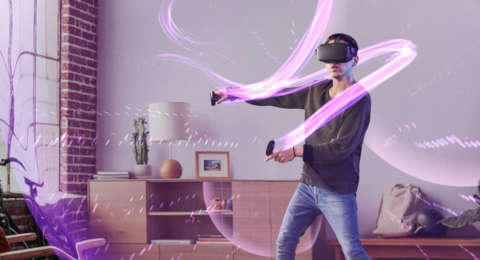
Oculus Quest may not be the final answer for in-home VR, but with rapid advancement of technology, one of its near future successors is sure to reach mass adoption status. And new interconnectivity technologies, such as G5, will make it possible to have a high quality, simultaneous VR experience with people located at other locations, so there will no longer be a need to visit some out-of-home VR arena with your friends to have that experience.
Will VR arenas replace laser tag? That is highly unlikely anywhere in the not too distant future, as laser tag is IRL (in real life) human-to-human interaction, where you can see people's real faces and expressions and interact with them IRL. In VR you interact with avatars representing the other players. That is not the same as interacting with real people in laser tag. Evolution has hard-wired us for IRL human-to-human, face-to-face interaction. Nothing, including VR, can fully substitute for that experience. Saying VR can replace laser tag is like saying you could have a dinner party sitting at home in VR with friends located elsewhere.
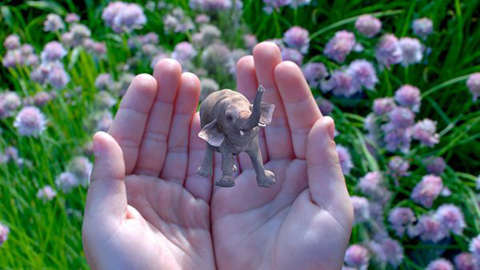
Actually, it is more likely that we will see augmented reality find its way into laser tag arenas. Unlike the wholly made up, artificial environments in VR, virtual objects in AR appear to exist alongside and interact with the real world. You continue to see the real world, so as far as the social interaction with other players goes, it' still ILR.
There will be a place for VR in CLVs and FECs, but much more likely in the arcades as games.
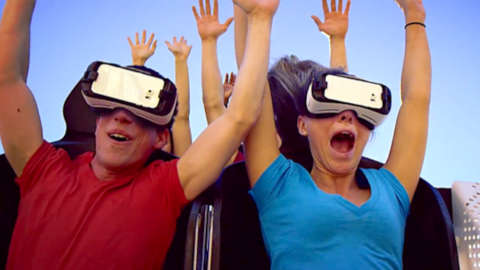
VR will most likely find its next-big-thing-future in theme parks and regional and tourist attractions that have the capital budgets to offer an experience you can't come close to in your home. One early simple example is combining VR with a roller coaster ride.
Rather than chase after expensive, guest-interacting high tech such as VR, CLVs can best succeed by offering IRL experiences that focus on facilitating socialization, both with the attractions and with the food and drink offerings. Sticking to the basics of offering a high-quality social and enjoyable experience and executing it well is the way for CLVs to win. Chasing the latest immature tech is not the answer.
Vol. XVIII, No. 10, December 2018
- Editor's corner
- Is virtual reality the next BIG THING?
- Ocean5 wins Best New Center - Lounge/Restaurant design award
- Google is updating Maps as a B2C app
- Recent articles and in the press
- Construction cost increases challenging feasibility
- Most loved non-alcoholic drinks & their fastest growing flavors
- Home-basing - the new competition
- Miniature golf design for tomorrow
- A new generation of moms in on the way
- Willingness to spend time and money in a restaurant based on the noise level
- Update on the Tchotchke Index - what does it really tell us?
- eSports growing in popularity and coming to Walmart
- Trends reshaping dining out


